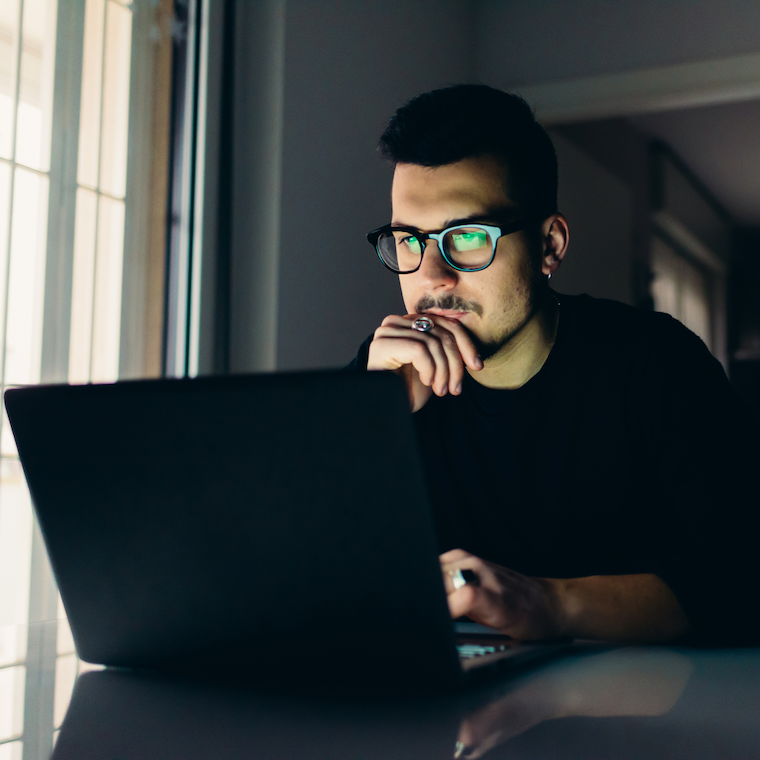Reducing Eye Strain from Devices

In today’s day and age, more and more of our day is becoming available on a digital screen. On average, Americans spend nearly 8-9 hours behind a screen of many sorts — reading emails, texting friends and family, daily tasks at work, video meetings, scrolling through social media on your break, streaming your favorite show at home, reading a book off your tablet, and even exercising accompanied by a virtually-instructed workout class… the list goes on. Escaping a screen is becoming more and more far-fetched with the rapid technological advances — all leading to hours behind a screen, resulting in eye strain.
Most digital screens (smartphones, tablets, computers, TV screens — all alike) emit blue light. Blue light, also known as high-energy visible (HEV) light, is a color on the visible light spectrum seen by human eyes. Blue light measures at a shorter wavelength, which produces higher amounts of energy. Unlike other forms of light, the human eye cannot filter out blue light, allowing the light to pass through to the retina.
This high-energy light can lead to risks to the eye. More than 65% of American experience symptoms of eye strain, including blurred vision, headaches, difficulties sleeping, and dry or irritated eyes brought on by prolonged screen time and exposure to blue light.
While exposure to blue light cannot ultimately be avoided, it can be monitored and limited.
Tips for Reducing Blue Light Exposure:
Wearing Blue Light Glasses
As the concerns of symptoms brought on by blue light, products have arisen to combat the symptoms — thus, a spike in the production of blue light-reducing glasses. In terms of color theory, blue light can be reduced and contrasted with yellow. Blue light reducing glasses are produced with yellow-tinted lenses to contrast and offset the emission of blue light. Wearing these glasses during long periods behind a screen can aid in preventing eye strain and other symptoms.
Follow 20-20-20 Rule
Giving your eyes frequent breaks from the screen can reduce eye strain. For every 20 minutes of screen time, take a break from the screen. Look at a non-digital object at least 20 feet away and focus for 20 seconds. Additionally, blinking more will help moisten your eyes and help reduce visual discomfort.
Reduce Screen Time & Adjust Screen Viewing
If continuously in front of a screen for work or school, reduce your leisure screen time. Opt for traditional printed books, keep screens away before bedtime, and set reminders for screen breaks. Pay attention to your posture when viewing screens – hold your phone or tablet at eye level, sit further away from the television, choose a standing desk, use ambient lighting instead of viewing in a dark room, and adjust your screen settings to minimize blue light emission and glare.
Schedule a Comprehensive Eye Exam
Routine visits to your eye care professional will keep track of your eye health and bring attention to any concerns. When speaking with your doctor, make sure to mention your amount of screen time. Your doctor may recommend other tips and practices to help with eye strain. Our trained staff will work with you to diagnose any vision problems and suggest the best treatment options and corrective measures for your eyes. Schedule an appointment or visit us at our Tri-County or Kehoe locations today!
